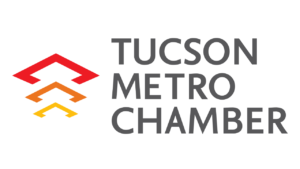SIGN IN

Post-pandemic Benefits Begin to Broaden Financial Wellness
Post-pandemic Benefits Begin to Broaden Financial Wellness
by Jack Clements | President of Arizona Operations at HUB International
In Arizona, workers continue to recover from the pandemic. This recovery is physical, emotional, and financial. They are feeling a debilitating amount of financial stress. And savvy employers understand that stressed employees are not productive employees.
Impacts of financial strain
The pandemic created a situation in which more wealthy, better educated Americans were able to maintain their lifestyle. Some were able to benefit from the impact of the pandemic. Many benefitted from work-from-home policies that kept them busy, productive, and safe. Other segments of the population struggled through the pandemic, with uncertainty of jobs and pay. There were also the risks involved in working on the front lines, which impacted stress levels significantly.
The John Hancock 2020 Financial Stress Survey reported that 62% of workers were experiencing moderate or extreme financial stress in the first year of the pandemic. This is compared to just 39% before the pandemic. Roughly 25% of workers had to dip into their savings to survive.
Another source of stress is the burden of student debt, a factor that the U.S. Federal Reserve reports as impacting approximately 44 million Americans for a total of $1.7 trillion. Credit card debt and other types of debt also add to stress levels. Americans in debt have great difficulty in beginning to save for retirement. This, in part, explains why about 25% of Americans have no retirement account at all.
Costs associated with an aging workforce
Financially stressed Americans are not doing anybody any favors. Organizations lose in a variety of ways, from absenteeism and presenteeism combined with the potential costs of an older workforce. When retirement is postponed for financial reasons, employers’ costs for healthcare escalate. In addition, some may argue that there are fewer openings for the next generations of workers. Overall, each year added to their average retirement age pushes their workforce cost up 1% to 1.5%.
Employers understand that they can make the difference between retirement readiness or not. By the end of 2020, roughly two-thirds of employers had initiated financial literacy programs, due in large part to the mounting pressures created by the pandemic.
Moving Beyond Financial Literacy
While employers have offered financial literacy programs for some time, the pandemic has offered an opportunity for Employee Benefits teams to rethink their entire strategy. While it is important to offer advice and coaching around retirement savings and 401(k) plans, this is no longer enough.
Today’s workforce is looking for help and support in a variety of financial areas, and there are cost-effective solutions to offer your employees. In fact, you may already have access to some of these solutions within your current benefits offerings.
To create a true reset, consider these four steps:
- Build your team
In larger organizations, teams are often siloed. This means employee benefits and retirement services are kept separate and discrete, which benefits no one. Create a joint task force of specialists for employee benefits and retirement who can work together to address the interconnectedness of the causes and the cures of financial stress.
- Find the pain points
Understanding your employee base is important, especially if you can further segment that base into smaller groups. Use analytics to identify specific financial pain points and tie them to a specific segment. Some data to look at includes patterns of sick and vacation day usage, utilization trends for specific benefits, and even retirement plan contribution patterns. Consider employee persona analysis for insights that go deeper than generational segmentation. Analytics will be invaluable for pointing the way to financial solutions that matter to employees.
- Identify what is needed and wanted
Most likely your organization already offers a variety of services through its Employee Assistance Program (EAP). You also may offer legal services and other benefits through a voluntary benefits program. Perform an audit to identify what you are already offering that can be promoted as part of the new financial wellness plan. After collecting data on your employee base, you will likely uncover a variety of other services that can be added, often with little to no cost. For example, paycheck advance programs can help workers avoid costly loans, and a student loan debt solution may be helpful to those burdened with a sizable student loan.
- Promote the program and encourage engagement
Design a campaign to promote program benefits. When promotional messages are aligned with employee needs, programs will be utilized successfully. So, make sure to create communications that are clear and concise and directed at the right employee segments. At the same time, drive awareness and enrollment with an engagement strategy that helps employees pay attention.
A legacy of my own
I have been in the insurance industry since 1989 and have managed a portfolio of challenging and complex cannabis, healthcare, real estate, and construction accounts. I founded The Clements Agency in 2000 and have served as a trusted source of insurance and a resource for risk management ever since. My family-owned business (my sons Jim and Sean are critical to the team) has steadily expanded its footprint in Arizona through strategic acquisitions.
Last year, the agency became part of a bigger family enabling a larger footprint when it was acquired by HUB International, a growing global insurance brokerage. I am now on HUB Southwest’s Executive Management Team, and I lead the operations for HUB’s Arizona offices.
Throughout my professional career, I have lived by the words of my late University of Notre Dame football coach Ara Parseghian: “There is no circumstance we can’t overcome.” I encourage everyone to take those words to heart in business and in life.
